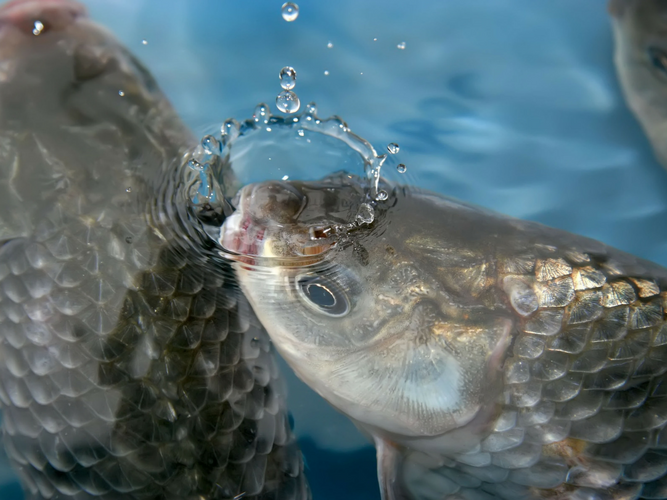
Caminhos para uma piscicultura mais sustentável
março 25, 2021Blog
julho 5, 2021O artigo a seguir mostra um pouco do tema “bem-estar de peixes cultivados na América Latina” e do trabalho de desenvolvido por Ana Silvia Pedrazzani (da Wai Ora) . A publicação original pode ser acessada clicando aqui.
Taking Pain Off the Table? - South Americans reflect on Fish Welfare
The following post was written by a Fish Welfare Initiative volunteer, Will Colin-Diamond. He recently graduated from UC San Diego where he studied comparative politics. In this blog post, Will explores attitudes of South American consumers and farmers towards fish welfare.
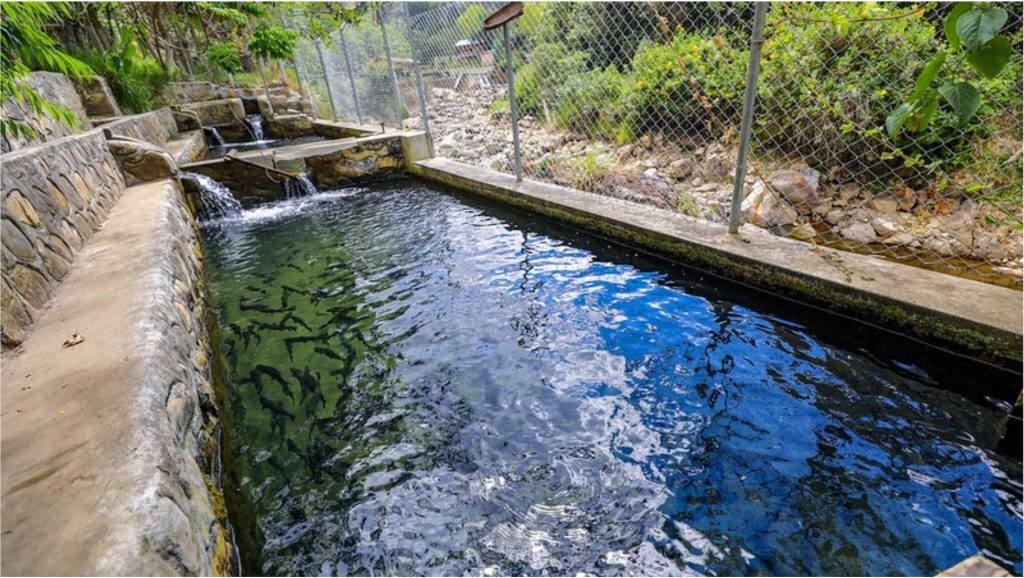
Trout and Tilapia swim in a Pool at Paradise Fish Farm in Namora, Peru
(Image Credit: Ministerio de la Producción)
We may not like to dwell on it, but it’s hardly a secret that animals suffer to feed us. Still, many feel a moral obligation to minimize that suffering, especially given the rise of industrial-scale production and the cost-saving methods involved. And over the past few decades, mounting concern for animal welfare has forced the farmed animal industry to improve conditions. But there’s something missing. Strangely enough, fish have been left out of the conversation.
Absent significant public pressure, the fishing and aquaculture industries have largely ignored welfare as an integral part of production. However, commonly employed catch and slaughter methods have come under increased scrutiny by academics and regulatory bodies in recent years. But it still isn’t clear how interested the average consumer is in fish welfare.
Do consumers attribute sentience, the ability to feel pain, and other such qualities to fish as they do to terrestrial farmed animals? How informed is the general public about their countries’ fish and animal welfare laws? In this blog post, we’ll take a look at how people across South America value fish welfare.
Suffering is Intuitive
Though research on public attitudes in South America is still developing, several important studies offer some insight into the region. A 2017 study of college-educated consumers conducted in Brazil and Colombia indicated that most respondents (75%) were convinced of fish sentience and their ability to suffer, despite the lack of regulations reflecting those beliefs in both countries.
The overwhelming majority (93%) said that fish suffer when removed from the water, and roughly 80% did not consider catch and release angling an acceptable practice. 56% were previously unaware of efforts towards humane fish farming and slaughter methods. However, after learning about the possibility of better fish welfare, 74% were for adopting fish slaughter regulations.
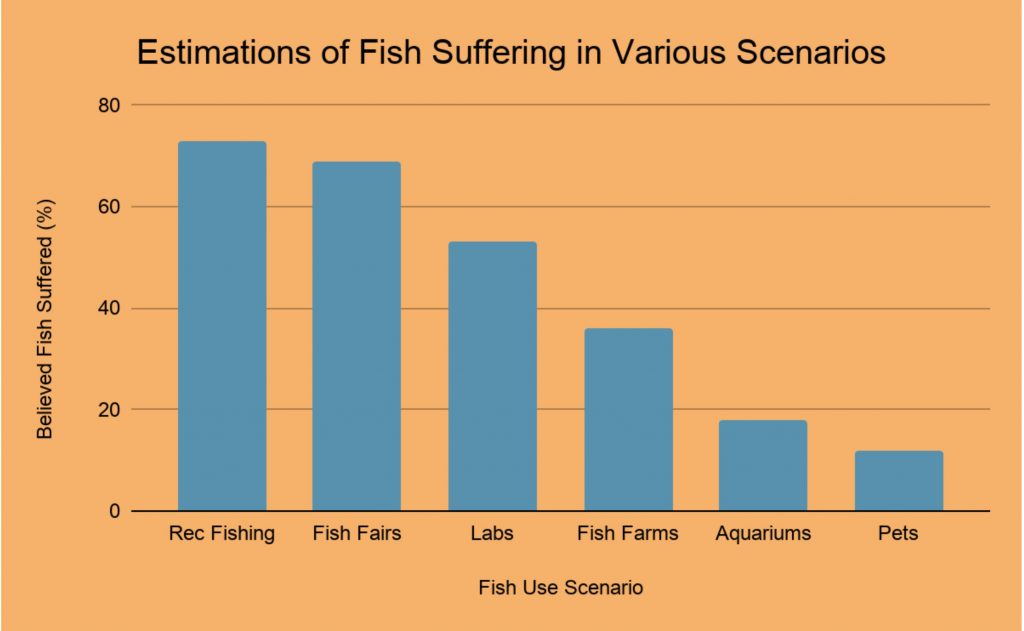
Fig. 1: Estimated Suffering by Scenario
Respondents estimated high rates of suffering when asked about scenarios such as recreational fishing (73%), live fish fairs (69%), and use in laboratories (53%). Fish farms were middling at 36% (See Fig. 1). In conventionally benign scenarios such as aquarium exhibits (18%) and keeping fish as pets (12%), estimates were low enough to suggest that even this well-educated segment of the population was uninformed on the harmful practices typically involved. The authors concluded that while the perception of high suffering in several scenarios was promising for welfare advocacy, there was a clear need to further educate the public on the harm fish endure in captivity.
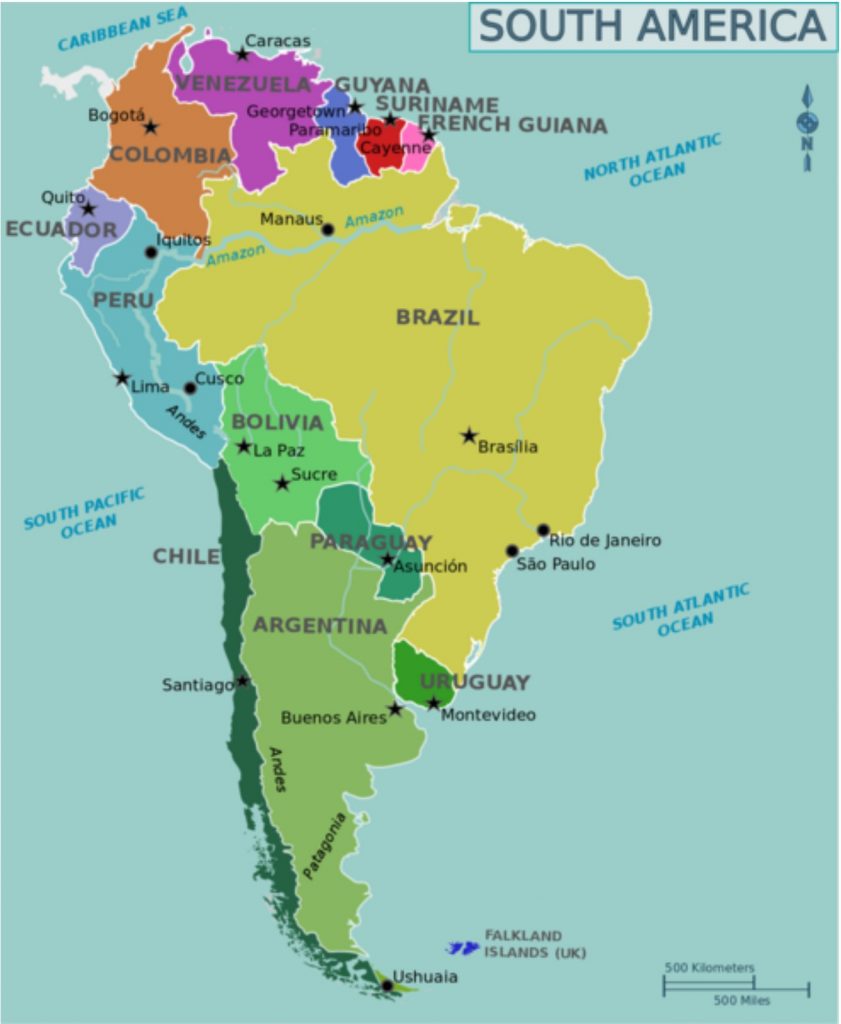
Political Map of South America
(Image credit: Cacahuate, amendments by Joelf and Globe-trotter, CC BY-SA 3.0)
So Why are Regulations so Elusive?
As mentioned in the previous study, there are currently no substantive regulations governing fish slaughter in South America [1]. Animal welfare legislation goes back as far as 1891 in Argentina, but much of Central and South America had nothing on the books until the 21st century [2]. And while these recent additions offer some cause for celebration, the existing laws exclude fish from humane slaughter regulations due to the lack of consensus on how to properly stun them.
But even as South America has largely remained stagnant on fish welfare, progress is being made elsewhere. According to Ana Silvia Pedrazzani, Ph.D at the Federal University of Paraná, Brazil, humane standards have been developed for salmon slaughter in Western European aquaculture. In this case, the sector was happy to underwrite the extensive experimentation required, as the time and cost was justified by consumer expectations and salmon’s high market value. However, it’s questionable whether the same conditions will occur in other markets.
That isn’t to say humane slaughter for all fish is impossible—it’s just that there is no market incentive to implement it, and we haven’t properly invested in determining species-appropriate methods. For instance, Pedrazzani has been trying to secure funding for research on a humane Tilapia slaughtering machine since 2009, without success. She has made progress on other fronts, however, and recently published a first-of-its-kind welfare assessment protocol for Brazilian Tilapia farms, using key health, nutritional, environmental, and behavioral indicators.

Dr. Ana Silvia Pedrazzani recently published the first welfare assessment tool for Brazilian tilapia farms.
The salmon stunning method is not universally effective. Despite inadequate research to prove it, the most commonly farmed species’ neuroanatomy and physiology differ enough that a “one size fits all” approach to stunning cannot reasonably exist. The most common method Pedrazzani has encountered in her domestic research, icing, causes obvious, severe suffering, but is believed to be sanitary and preserve meat quality.
While anesthesia is commonly used in laboratory settings, many countries prohibit its use on commercially-sold fish due to fear of contamination. New Zealand is one of the few that does authorize anesthesia, using a clove oil derivative that is considered safe and highly effective.
Given the state of development in humane techniques, it will require more than education and advocacy to address the lack of public awareness identified in the 2017 study. Governments and NGOs will need to fund research on high-welfare techniques during capture, production on farms, and at slaughter.
The Potential is There
We have a sense of consumers’ beliefs and preferences, but what about the workers that actually catch and handle the fish? In a 2008 study, Brazilian researchers interviewed workers and customers at a municipal fish fair and a bus station. On the question of sentience, the vast majority (>85%) agreed that fish feel pain. A similar percentage admitted that some slaughter techniques cause suffering, but only about half of respondents agreed that meat quality is worsened by these techniques [3]. Fewer than 1 in 10 had ever heard of humane slaughter. After showing fish cleaners a humane slaughtering technique, the authors reported that 83% adopted it and 75% agreed that it didn’t interfere with their work.
Another barrier to improved fish welfare could be consumers’ budget constraints. In a 2014 survey conducted in Lima, Peru, researchers sought to understand consumer preferences and willingness to pay (WTP) for fish raised under different conditions and government certification schemes. Those surveyed were broadly representative of the local population, and indicated a preference for wild-caught fish overall, in terms of the highest WTP. Things got more interesting as they worked their way down the preference ranks, however.
Fish raised in wastewater without certification garnered a higher WTP than the same fish with certification. The authors speculated that this reflects a distrust of government regulatory bodies, which are not perceived as independent certifying institutions and may be vulnerable to corrupt schemes. Meanwhile, consumers put an intuitively higher WTP on freshwater-raised fish, which increased even higher with certification.
Additional questions to understand their motivations suggested that higher WTP was closely related to the perception of a safer product. They were more concerned about farming practices from a public health perspective than one of welfare.
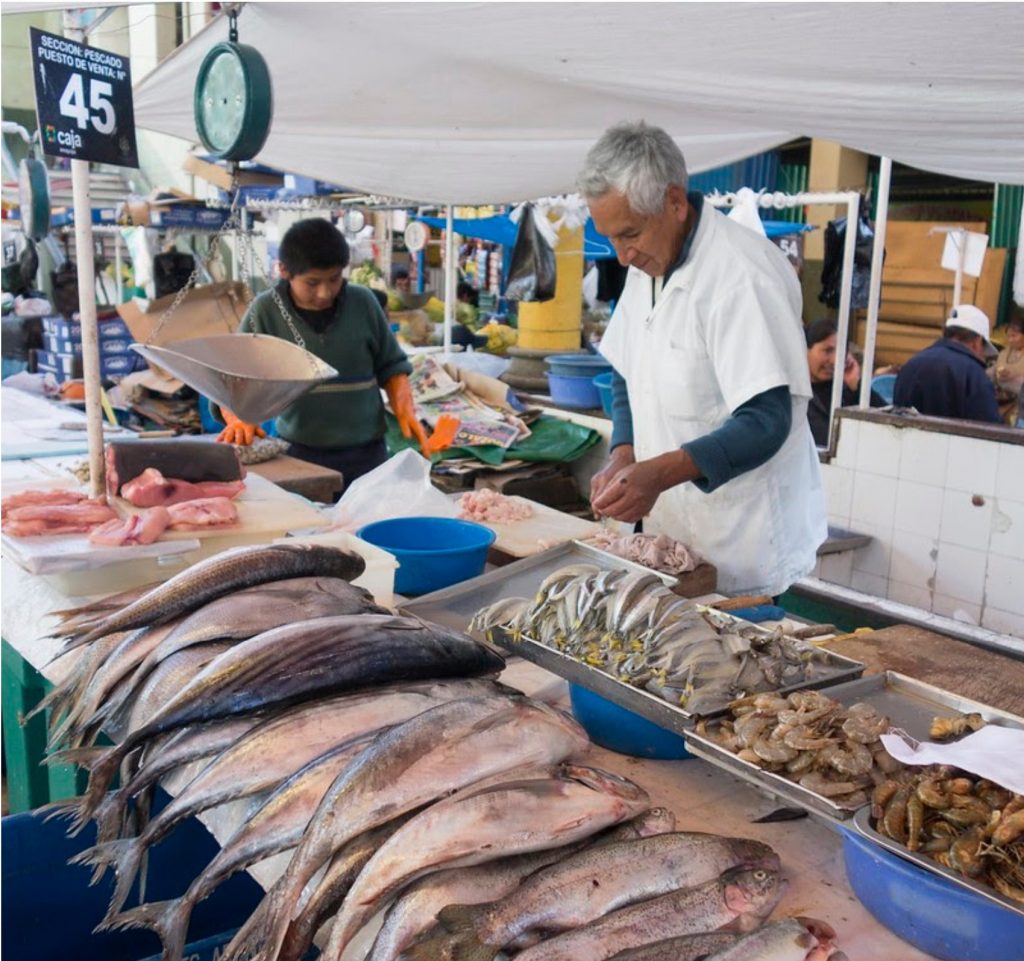
A fishmonger at the Mercado de San Camilo, Arequipa, Peru
(Image Credit: A. Davey, CC BY-NC-ND 2.0)
A Growing Trend
Recreational fishing in South America is a relatively new phenomenon, supplementing commercial and subsistence fishing, so it’s no surprise that little research is available on this quickly growing segment of the industry.
Studies in Brazil [4] have indicated a large gap between state-issued angling licenses, of which 370,000 were granted in 2014, [5] and the actual number of active anglers, which may be as many as 10 million. It is virtually impossible to enforce humane capture and slaughter in recreational fishing, so there could be widespread use of inhumane practices.
Though no formal study on public acceptance of recreational fisheries in the region has been conducted to date, fisheries have faced little public resistance as they’ve continued to crop up over the years. Pedrazzani believes that the movement for fish welfare is also hindered by “neophobia,” or suspicion of an idea that undermines tradition. In this case, there is fear that the ritual of a father taking his son out fishing might become a casualty of onerous regulations.
Just Getting Started
Though research on fish welfare sentiment in South America is still in its infancy, these studies establish a solid foundation to build on.
We saw that both consumers and producers know fish feel pain. Many were interested in minimizing suffering at the point of slaughter, where the potential for unnecessary harm is readily apparent. But few were informed enough to be disturbed by the conditions fish are raised and caught in. Even the most sympathetic consumers were not aware that there are no regulations.
And though college-educated consumers, in particular, were convinced of fish sentience and supportive of welfare protections, we can’t be certain that most South Americans conceive of fish welfare as intrinsically valuable. We saw concerns rooted in human health consequences, such as diet and the use of antibiotics, but that shouldn’t be confused with a genuine interest in welfare. Producers were primarily concerned with hygiene and meat quality, so pain was minimized only where practical.
This is not simply a matter of corruption or apathy. We still have yet to produce proven, species-specific stunning techniques for even the most common species on the continent. Whatever methods are employed until then will be an educated guess at best. Though, if the rising enthusiasm for animal welfare is any indication, we can anticipate greater interest in funding the prerequisite research, as well as increased pressure on regulatory bodies to enact enforceable standards for fish welfare. In the meantime, unfortunately, it is business as usual.
We are grateful to Dr. Pedrazzani and the team from Vegetarianos Hoy for sharing their expertise on the region and giving feedback.
Footnotes
[1] With the minor exceptions of Brazil’s prohibition on fishing with explosives and toxic compounds, and unenforceable language in Chile’s aquaculture laws.
[2] For example, Chile adopted legislation in 2009.
[3] We should note that suffering, i.e., slaughter-induced stress, is known to worsen meat quality.
[4] Freire et al. 2012 and 2016.
[5] Up from 100,000 in 2000, and 220,000 in 2010.

